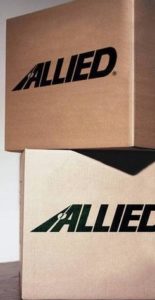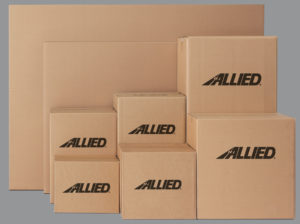Packing Tips to Make Your Move Go Smooth
Last Updated : February 28, 2024 2:07 PM by Hannah Lucas
Moving, whether it be by yourself or with the help of a professional mover, takes energy, time, and is undeniably stressful. Fortunately, this guide on effectively packing and planning for your move will hopefully address some of your concerns and help you plan for your move.
Are you struggling to figure out how to pack for your move? Are you interested in any tips to make your move quicker and more convenient? If so, this article on packing and moving tips may help improve not just the quality, but the efficiency of your move as well.
Take some time to become familiar with the quantity of boxes needed for your move, what type of boxes you’ll need, and last how to label your boxes for efficient delivery and unpacking.
1. Calculate the amount of boxes you’ll need for packing based on the size of your home.
 After you have made a decision on whether you want to pack your items yourself or hire professional help, it is time to move on to the next step. If you are packing yourself, you will have to determine how about how many boxes to purchase based on how many bedrooms are in your home.
After you have made a decision on whether you want to pack your items yourself or hire professional help, it is time to move on to the next step. If you are packing yourself, you will have to determine how about how many boxes to purchase based on how many bedrooms are in your home.
The approximate number of cartons suggested to move per bedroom:
1 Bedroom | 25 Cartons
2 Bedroom | 50 Cartons
3 Bedroom | 75 Cartons
4+ Bedroom | 100+ Cartons
Keep in mind that depending on how many items are in each room can cause the number of predicted boxes to shift either up or down. The best way to find out how many boxes will be needed to pack your house is by scheduling a free in home estimate with us.
2. Determine the type of boxes that will be needed to safely transport your belongings from your old residence to your new home.
While it may seem appealing to pick up used boxes for free at your local grocery store to pack your household goods, it is recommended that you buy professional grade moving boxes to ensure protection of your belongings. If you pack your own boxes yourself, the mover is not responsible for any damage that occurs during the shipment so it is crucial that you pack correctly to protect your items.
Below is a small list of a few of the standard boxes that are used most often on household moves. For a full list of the specialized boxes we have available, please contact us or come into our physical location.

This list is a sample of the some of the cartons we have available for sale:
Small Cartons – 1.5 cubic feet (17 in x 12 in x 12 in). Typically used to pack small, heavy weight items, such as books, record albums, canned goods, and small kitchen appliances. Two feet of regular size books on the shelf will usually fit into one small carton. They are also called book cartons.
Medium Cartons – 3.0 cubic feet (18 in x 16 in x 16 in). Used to pack small appliances, toys, and medium weight items.
Medium Large Cartons – 4.5 cubic feet (18 in x 18 in x 24 in). They can be used to pack larger, lighter weight items such as pots and pans.
Large Cartons – 6.0 cubic feet (22 in x 22 in x 21 in). They are used to pack bedding, towels, linens, pillows, and large or bulky, lightweight items.
Extra Large Cartons – 6.5 cubic feet (24 in x 24 in x 20 in). Can be used to pack TVs, microwaves, and other larger, sturdy items.
Dish Packs – 5.0 cubic feet (18 in x 18 in x 28 in). Usually used to pack dishes (1 full set of 12 with gravy boat and platter will fit). Dish Packs are double-wall cartons and are great for electronic components such as speakers and lamps as well.
Pole Lamp Cartons – 3.33 cubic feet (16 in x 12 in x 40 in). Used to pack pole lamps, golf clubs, and other long items.
Wardrobes – 15 cubic feet (20 in x 24 in x 48 in). They can hold two to three feet of clothing hanging naturally in a closet.
Flat Wardrobes – 3.43 cubic feet (33 in x 20 in x 9 in). Typically used for uniforms, wedding dresses, and other items.
Glass Packs – Used for packing large pictures and mirrors; there are three styles or sizes. We can help you choose the proper box for your needs.
3. Create a game plan to decide what you’re going to pack each day leading up to your move. This is the easiest way to stay on track and make sure you don’t take on more than you can handle at once.
- Make sure you have proper packing material. You will need paper for wrapping, tape to close the boxes, and a marking pen to write on the boxes.
- Don’t leave empty spaces in boxes. Instead use material to fill any gaps and prevent items from shifting around during transport. Consider bubble wrap, paper pads, and other specialized products to pack your possessions safely. One option is to use towels, linens, pillows, and any other soft items to protect more fragile possessions.
- Keep an itemized list of everything you move. You may want to keep an inventory of items packed in each box with a numbering system. If you hire movers, they will keep their own list but it’s good idea to compare them before the truck takes off. On each box, write your last name and the room the box should be placed in upon delivery. It will make the delivery smooth and eliminate movers asking you where to put each box.

- LVRM | Living Room
- FAMRM | Family Room
- DR | Dining Room
- KIT | Kitchen
- BATH | Main Bath, Mstr Bath (Master), etc.
- BDRM | Bedroom 1, 2, 3,… or Cathy’s room, Tom’s room, etc.
- GAR | Garage
- STG | Storage
- Don’t over pack your moving boxes. Avoid making the mistake of trying to fit your belongings into a few boxes you have lying around the house. To prevent injury, you should use as many boxes as you need to create loads that are easy to lift. One rule of thumb is to keep your largest boxes under 50 lbs.
